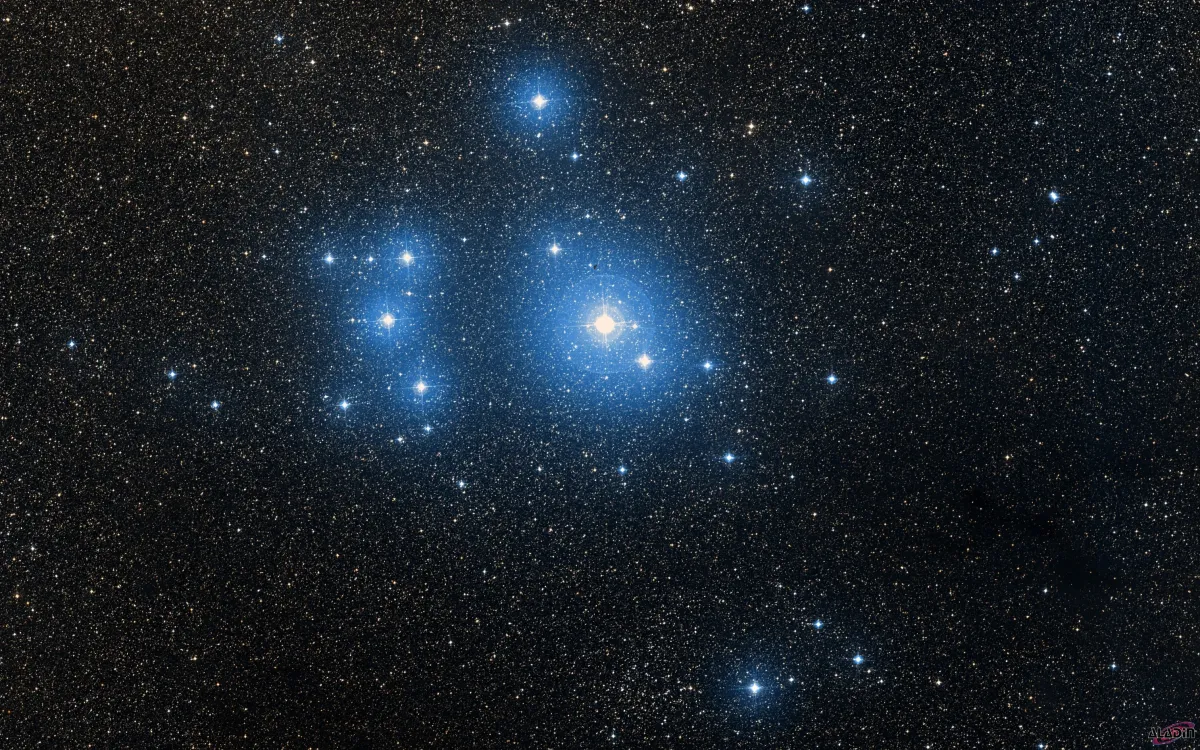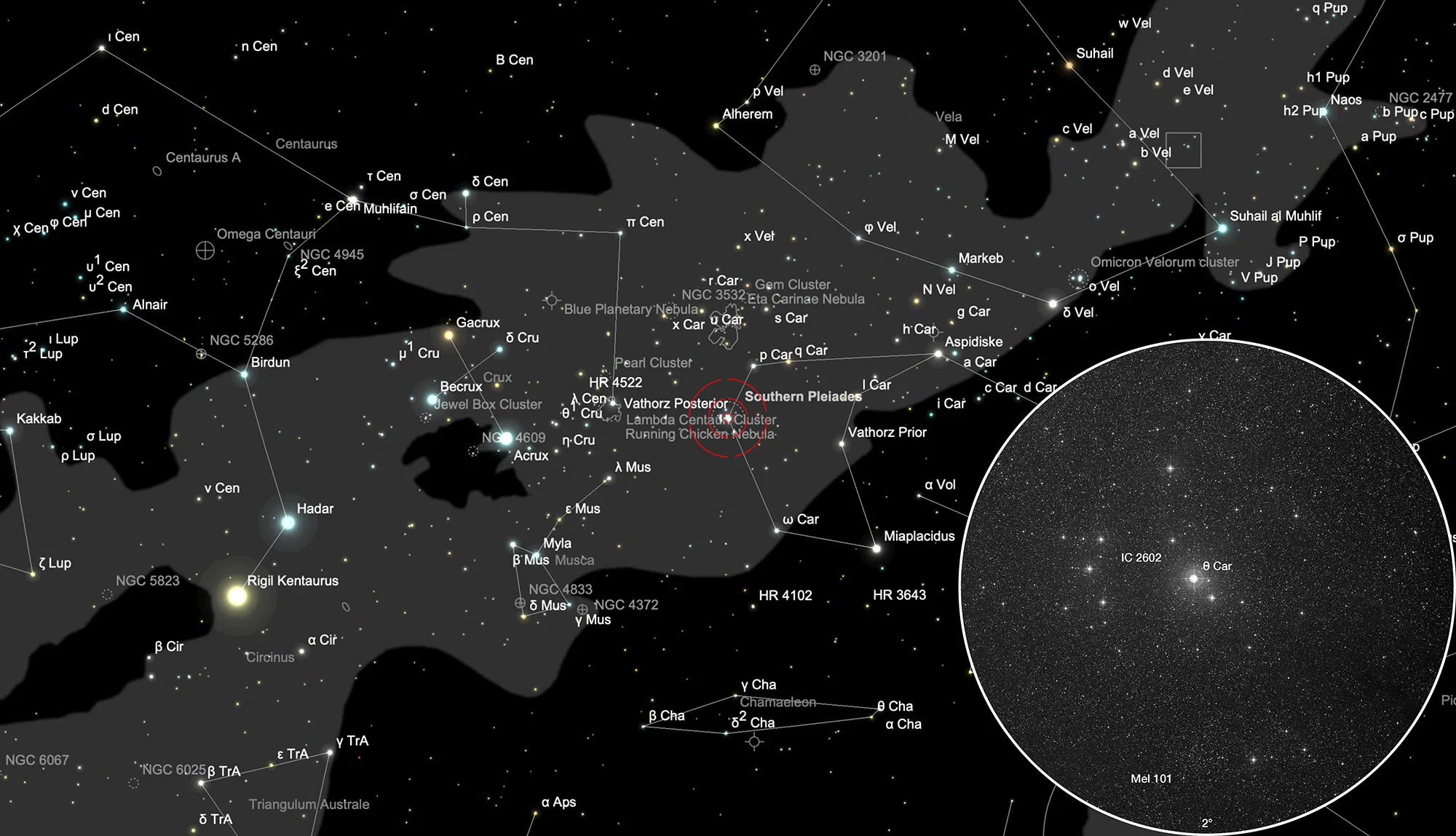Southern Pleiades (IC 2602)

History
This cluster was discovered by French astronomer Nicolas-Louis de Lacaille in 1751-1752 during his expedition to the Cape of Good Hope. He was using a small ½-inch telescope that had a magnification of 8x. He listed it as Lac II-9 and noted: «Star θ of Navis, of at least third magnitude, surrounded by a large number of stars of the 6th, 7th, and 8th magnitude, which makes it resemble the Pleiades.» [8] The nickname «Southern Pleiades» originates from this description. Since John Herschel did not observe this prominent naked-eye cluster during his time at the Cape of Good Hope, it was never assigned a GC or NGC designation.
American astronomer Solon Bailey found the cluster again on a photographic plate in 1896 using a 1" (f/13) Cook lens at Harvard's high altitude Arequipa station in Peru. The discovery was reported in «A Catalogue of Bright Clusters and Nebulae» (Annals of Harvard College Observatory, Vol LX, No. VIII) and Bailey was credited with the discovery in the IC. [364]
Physical Properties
| Designation | IC 2602 |
| Type | OCL (II3m) |
| Right Ascension (J2000.0) | 10h 42m 56.5s |
| Declination (J2000.0) | -64° 23' 39" |
| Diameter | 100 arcmin |
| Visual magnitude | 1.6 mag |
| Metric Distance | 0.160 kpc |
| Dreyer Description | Cl, co, incl. θ Carinae |
| Identification, Remarks | OCL 838; ESO 93-SC2; Southern Pleiades |
Finder Chart
The open cluster IC 2602 is located in the constellation Carina near the 2.7 mag bright star θ Carinae. Unfortunately it is not visible from Europe. On 28 February it in opposition with the Sun and is therefore highest in the sky at local midnight.
